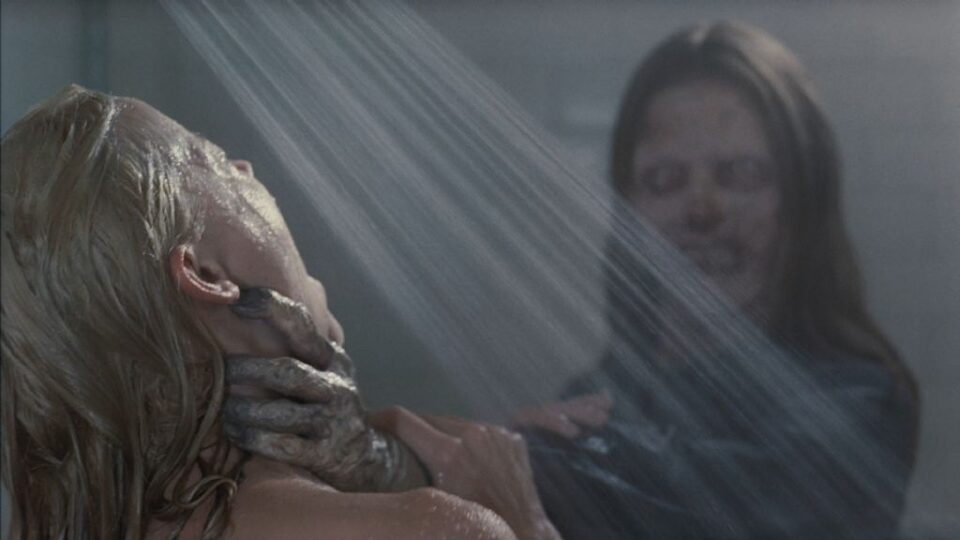John Carpenter’s ‘The Ward’ is a Better Ghost Story Than You Remember

Horror fans everywhere rejoiced at the news that John Carpenter was returning to the director’s chair with Suburban Screams, the true crime series landing on Peacock in October. The series will mark John Carpenter’s first directorial outing in over a decade. Carpenter’s last outing, the criminally underrated The Ward, is more novelty than anything in most horror circles. It’s John Carpenter’s last feature gig (for now, God willing), though appreciation rarely transcends recognition. And, yes, while The Ward certainly isn’t top-tier Carpenter, I’d make the argument it’s a lot better than most people remember. It’s a movie whose own merits eclipse being a mere biographical note.
Way back in 2010, The Ward premiered at the Toronto International Film Festival. The reception was mixed, yet name recognition ensured The Ward would have a healthy showing on the festival circuit. In January 2011, The Ward had an ephemeral UK theatrical release, followed by an even shorter US bow in July that same year (where The Ward grossed a paltry $7,760 on just a few screens). A home video and On Demand release followed in September where it was gobbled up by burgeoning horror fans (read: me) desperate to get their hands on anything new.
Also Read: Quentin Tarantino Reveals Which Of His Films Was Influenced By A John Carpenter Classic
In fairness, there are stretches of The Ward that feel as conventional as they come. Without knowing it, audiences would be forgiven for thinking Carpenter had nothing to do with it at all. In an interview with Chris Eggertsen for Bloody Disgusting, Carpenter remarked both falling out of love with cinematic storytelling (his previous feature was 2001’s Ghost of Mars, almost a decade before) and feeling inspired by The Ward’s single location setting. And that setting pulls its weight. Filmed in the Eastern State Hospital, Carpenter mines plenty of tactile scares from the real locale while additionally pulling from the location’s real, sordid history. Like several other psychiatric facilities around the country, Eastern State Hospital’s history is marred by tragedy, scandal, and abuse.
More than anything, The Ward feels like Carpenter—to use Halloween’s infamous tagline—coming home again. The widescreen frame adds texture and dimension to an otherwise rote ghost story. Plus, Carpenter’s patented stylistic flourishes are on full display, most notably during a slow title crawl through a hallway lit only by exterior lightning. The cast, including Amber Heard, horror mainstay Danielle Panabaker, and Jared Harris, elevate the more conventional stretches, imbuing their parts with humanity even as the script wishes for nothing more than to whiz from scare to scare.

And those scares, familiar as they might be, do work. Here, Carpenter was an unintentional trendsetter, reigniting the contemporary trend of gooey, real ghosts. While he doesn’t go as digital as someone like Guillermo del Toro, his Alice—the former patient ostensibly haunting the halls—is a rotted, drippy thing, a gaseous, gruesome corpse with a keen sense of physicality. Alice crawls, grabs, slashes, and stabs her way through the other girls in the ward with gruesome aplomb.
Also Read: John Carpenter’s Favorite Movies Are Now Streaming On HBOMax
The Ward never looks anything less than stellar. While its inevitable conclusion is a pox on an otherwise fun time—spoiler: it’s dissociative identity disorder, none of it is real—it remains more than just a capstone note in Carpenter’s career. Like the best of them, Carpenter is never half-assed; he full-asses The Ward no differently than his entire, storied filmography. His keen sense of genre and craft elevate the familiar into a funhouse of frights. It’s safe and cozy supernatural horror, though as a re-acclimation of sorts, it would be unfair to ask for anything more.
Carpenter has been working within the genre framework for decades, and with The Ward, he was undoubtedly getting comfortable again. More than that, he was responding to an entire nine years of genre development. The scares had shifted from teen screams to international imports, some supernatural, some wickedly violent and extreme. The horror genre had been audited, and in 2009 when The Ward was filmed, few people knew where it was going to go next.
Also Read: John Carpenter On New Projects and the Fate of Michael Myers: “I don’t believe it’s the end”
Carpenter wisely both adheres to what’s come before—at times, The Ward feels like another entry in the After Dark Horrorfest series of releases—and what he anticipated might come next. In 2011, The Awakening, Grave Encounters, The Innkeepers, Apartment 143, and several others all endeavored to render the haunted house new again. While The Ward wasn’t quite as successful as any of those at carving out a niche of its own, it was a damned good shot at it.
At the time, it was unclear what The Ward was a sign of. Was it Carpenter’s swan song or the first in a revitalized career? Twelve years later, it might well be the latter. Contextually, it may not be his strongest offering, but few horror filmmakers have remained as consistent as he is. The Ward isn’t Halloween, but if it remains his final bow, he went out not with a whimper, but a certified bang.
Categorized:Editorials
